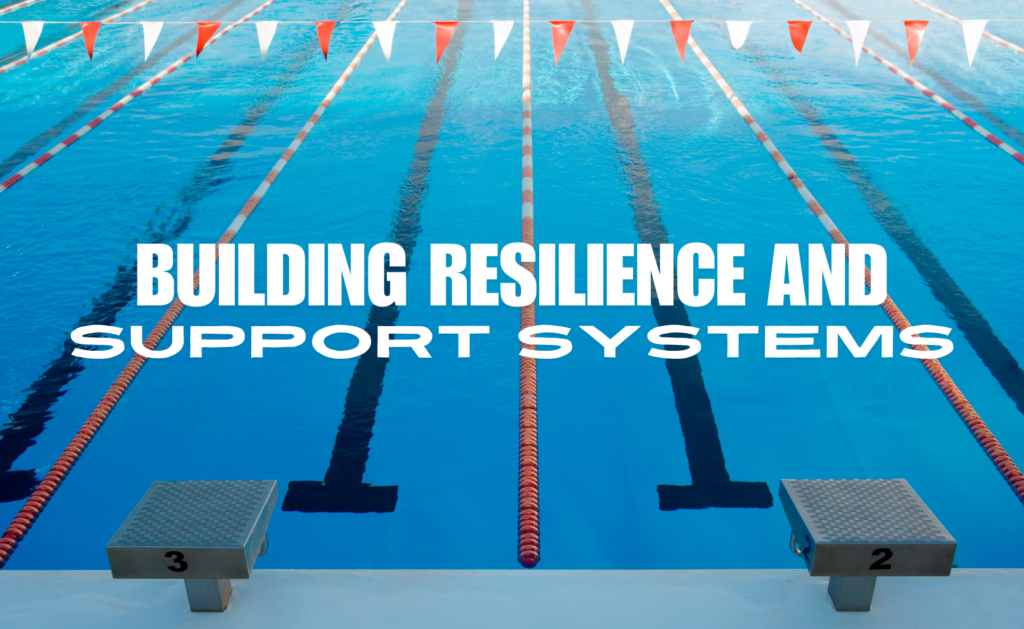
Complex Post-Traumatic Stress Disorder (cPTSD) is the result of multiple traumatic events occurring over a period of time, often referred to as “complex trauma”.
Complex Post-Traumatic Stress Disorder (cPTSD) is the result of multiple traumatic events occurring over a period of time, often referred to as “complex trauma.” Unlike PTSD, which typically stems from a single traumatic event, cPTSD develops from long-term trauma, often beginning in childhood. This distinction is crucial because it shapes how those of us living with cPTSD experience and manage our symptoms.
Talking about living with cPTSD is essential. Not only does it help demystify the condition, but it also provides a sense of validation and community for those who are struggling. By sharing our stories, we can help others understand the complexities of living with cPTSD and encourage those affected to seek help.
What causes cPTSD?
cPTSD often originates from childhood trauma, such as emotional, physical, or sexual abuse. In my case, it was a combination of neglect through abandonment and emotional abuse that left lasting scars. The constant environment of fear and instability shaped my worldview and how I interacted with others.
Other causes of cPTSD can include abusive relationships, prolonged stress, or repeated traumatic events. These experiences don’t just affect us in the moment—they embed themselves into our psyche, influencing our reactions and behaviors long after the trauma has ended.
Factors that increase the risk of developing cPTSD include:
- The trauma was caused by someone close to you
- The trauma lasted a long time
- Escape or rescue was unlikely or impossible
- The trauma was repetitive
- The trauma involved harm or abandonment by caregivers
Living with cPTSD vs. PTSD vs. BPD – Let’s Break It Down
| Aspect | cPTSD | PTSD | BPD |
|---|---|---|---|
| Definition | Develops from prolonged trauma, such as ongoing abuse or neglect. | Results from a single traumatic event or a series of traumatic events. | Characterized by intense emotional instability and difficulty maintaining relationships. |
| Main Symptoms | Emotional flashbacks, difficulty regulating emotions, negative self-view, interpersonal issues. | Re-experiencing the trauma (flashbacks), avoidance of reminders, hyperarousal, negative changes in mood. | Intense mood swings, fear of abandonment, impulsive behavior, unstable relationships, self-image issues. |
| Common Causes | Chronic child abuse, domestic violence, prolonged exposure to traumatic environments. | Severe accidents, natural disasters, war, assault, or witnessing traumatic events. | Combination of genetic, environmental, and social factors, including childhood trauma. |
| Treatment Options | Psychotherapy (e.g., EMDR, CBT), medication, self-help strategies. | Psychotherapy (e.g., CBT, exposure therapy), medication, support groups. | Dialectical behavior therapy (DBT), psychotherapy, medication, support groups. |
| Overlap | Shares some symptoms with both PTSD and BPD, especially in emotional regulation and trauma history. | Shares some symptoms with cPTSD, particularly related to trauma and avoidance behaviors. | Shares emotional regulation issues with cPTSD and may have a trauma history. |
Healing Through Complex Post-Traumatic Stress Disorder
Once I decided to heal, or at least work towards it, I put everything I had left into that journey. The first step was admitting that I needed help. My emotional outbursts were at an all-time high, my brain was foggy, and I couldn’t even hear my own thoughts anymore—just the opinions and perceptions of others forced onto my life.
Therapy was one of the best decisions I made for myself at the time. It re-taught me how to set and work towards goals. Growing up with cPTSD and childhood trauma, I had learned to put others’ needs first, to walk on eggshells to avoid conflict. This constant anxiety had left me a shell of myself.
By the time I started therapy, I was severely depressed and suicidal. Every day I woke up to panic attacks and flashbacks. I was aggressive, impulsive, and avoided anyone or anything that had caused me trauma. I struggled to maintain healthy relationships and had no idea how to make any of it stop.
The worst part, I had no idea how to make any of it stop.
My Diagnosis, Goals and Objectives Living with cPTSD
One thing about me is that if I’ve experienced something significant, learned from it, and can share that knowledge to help others, I will.
The reality of living with cPTSD is that you are relearning basic life skills from the ground up, and it’s not pretty. I had to be brutally honest with my therapist and myself. For the first time, I shared everything I had been through, giving someone the whole truth, start to finish.
You know what’s surprising? My therapist didn’t judge me. She empowered me. She made me feel resilient and strong. Therapy was the first step, and it proved to be the right one.
Here are the results and ongoing treatment plans since I began therapy in June 2022:
Initial Diagnosis:
- F41.1 – Generalized anxiety disorder with panic attack specifier
- F32.2 – Major depressive disorder, single episode, severe without psychotic features
- F43.10 – Post-traumatic stress disorder, unspecified
The Long Term Goal: To gain the emotional stability, resilience, and inner peace necessary for me to move forward in all aspects of my life; to do the trauma work necessary to assist in reaching that goal.
Three Goals:
- Resilience and inner peace
- Emotional regulation and emotional stability
- Process and heal from past traumas
Three Objectives:
- Learn to identify, manage, and mitigate her activators and symptoms of anxiety and distress.
- Learn to identify, manage, and mitigate her activators and symptoms of emotional dysregulation.
- Process past traumas through EMDR Therapy in order to be emotionally present, and to better protect herself from ongoing, chronic trauma.
Understanding the Reality of Living with cPTSD
The ICD-11 diagnostic manual includes Complex Post-Traumatic Stress Disorder under the Disorders specifically associated with stress section, immediately after Post-Traumatic Stress Disorder.
Complex post traumatic stress disorder (Complex PTSD) is a disorder that may develop following exposure to an event or series of events of an extremely threatening or horrific nature, most commonly prolonged or repetitive events from which escape is difficult or impossible (e.g. torture, slavery, genocide campaigns, prolonged domestic violence, repeated childhood sexual or physical abuse). All diagnostic requirements for PTSD are met.
In addition, Complex PTSD is characterised by severe and persistent 1) problems in affect regulation; 2) beliefs about oneself as diminished, defeated or worthless, accompanied by feelings of shame, guilt or failure related to the traumatic event; and 3) difficulties in sustaining relationships and in feeling close to others.
These symptoms cause significant impairment in personal, family, social, educational, occupational or other important areas of functioning. [1]
cPTSD causes a broader range of symptoms compared to PTSD.
The additional symptoms of Complex PTSD are known as Disturbances in self-organization. Disturbances in Self-Organization (DSO) is a term coined by Dr. Marylene Cloitre referring to the three domains of complex trauma.
These three additional symptoms that result from cPTSD but are not part of PTSD:
- Affective Dysregulation (AD): Difficulty managing emotions, dissociative symptoms under stress, emotional numbing, or the inability to experience pleasure. Unexpressed anger and internalized rage from the trauma may lead to self-destructive or risk-taking behaviors.
- Negative Self-Concept (NSC): Low self-worth or feelings of worthlessness and guilt. Survivors of PTSD may feel “not myself,” while survivors of cPTSD may feel no sense of self at all or experience a changed personality.
- Disturbances in Relationships (DR): Resulting from interpersonal trauma, prolonged abuse leads to a loss of previously-held beliefs, with feelings of “being forsaken by both man and God.” Anger and rage, both at perpetrators and the self, can only be fully expressed after the trauma ends.
Living with cPTSD often means dealing with more severe DSO-type symptoms, such as:
- Negative Self-View: You might struggle with feelings of shame or guilt related to your traumatic experiences. It’s common to feel like you’re to blame or believe that you’ve been permanently changed in a negative way.
- Dissociation: Dissociation involves feeling detached from yourself and your emotions. You might have trouble remembering parts of the trauma or even forget that it happened at all.
- Intense Emotions: You could experience intense emotions like anger or sadness that seem to come out of nowhere, often without any clear trigger.
- Relationship Difficulties: Trusting others can be incredibly challenging. You might expect that people will harm you, or find yourself in other traumatic situations, especially if abuse was a regular part of your past.
- Loss of Belief Systems: Trauma can profoundly affect your spiritual beliefs and worldview. You might start questioning the purpose or meaning of the things you once believed in.
- Distorted Perceptions: If you’ve survived abuse, your thoughts might fixate on your relationship with the person who abused you. You could also become focused on thoughts of revenge or feel responsible for your abuser’s actions. It’s important to remember: You are not at fault.
Do I Have cPTSD? How to Find Out + Treatments
If you’ve experienced trauma and feel its impact on your daily life, a mental health professional can diagnose cPTSD (or PTSD). Finding help might seem overwhelming, but it’s a crucial step toward healing. Your doctor can guide you to reliable resources in your area.
Treatments for cPTSD may include:
- Therapy, focusing on cognitive behavioral therapy (CBT) and dialectical behavior therapy (DBT)
- Medication
- Integrative adaptation and development after persecution and trauma (ADAPT) therapy
- Eye movement desensitization and reprocessing (EMDR) therapy
- Somatic therapies like somatic experiencing
Check out my bookshelf on Amazon to see some of the books that helped me through my own healing journey this past year.
[1] World Health Organization. (2024). ICD-11 (Version 01/2024). World Health Organization.



